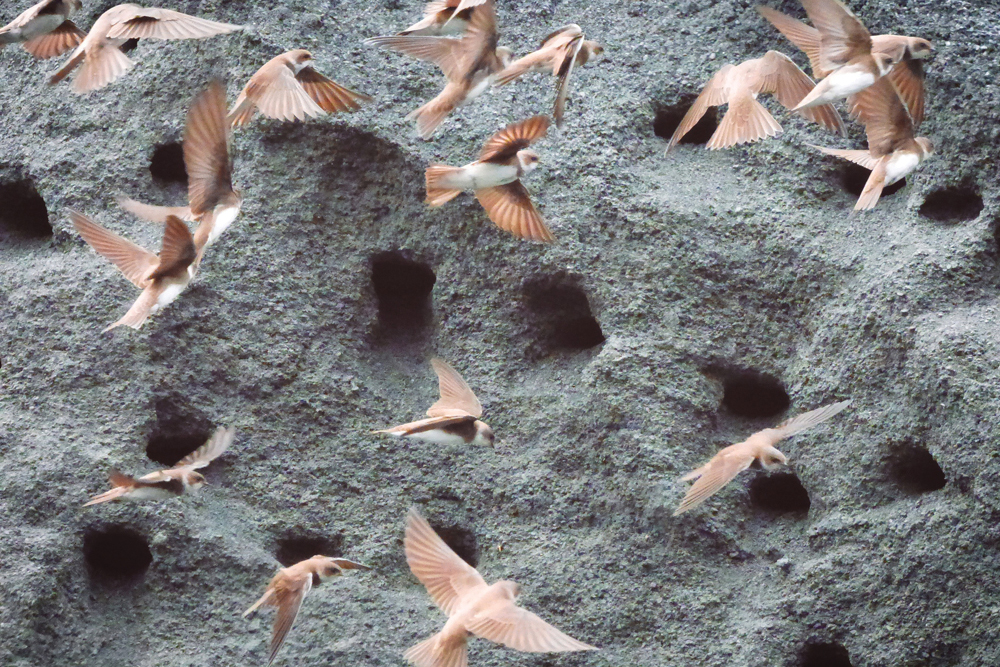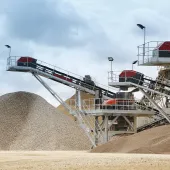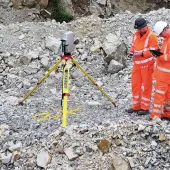Quarries & Nature 2017

First published in the December 2017 issue of Quarry Management
MPA celebrates the industry’s restoration and biodiversity achievements at The Royal Society in London
Mineral Products Association (MPA) members are planning to increase the area of priority habitats on restored sites from 6,000ha currently to around 9,000ha in coming years, and increase the length of hedgerows planted from 79km to 237km. The area of priority habitat would be equivalent to the size of Cardiff, and hedgerow would stretch from London to Cardiff.
This was the background to the MPA’s ‘Quarries & Nature 2017 – Appreciating Assets’ event, presented by BBC Radio 4’s Farming Today presenter, Sybil Ruscoe, on Thursday 19 October at The Royal Society, London.
The event attracted 45 environmental and conservation organizations as well as industry operators to celebrate the industry’s contribution to nature conservation. Expert speakers included Stephanie Hilborne OBE, chief executive of The Wildlife Trusts, Professor Steve Ormerod, Cardiff Professor of Ecology and until recently chairman of the RSPB, and Tom Butterworth, associate director of WSP.
The event showcased some of the best examples of quarry restoration and wildlife conservation anywhere in Europe, which had been entered for the MPA Restoration Awards and the MPA Biodiversity Awards, in association with Natural England. A series of outstanding images were also presented as part of the MPA’s Nature Photo competition.
The MPA also launched Quarrywatch (see panel), which will link into the nationwide round of BioBlitz events being planned around the country during 2018 and will involve focused nature surveys at designated locations to gain a picture of the species colonizing restored quarries and other nature sites. Local wildlife groups, individual enthusiasts and schools will also be invited to take part in the initiative.
The tenth anniversary of the partnership programme Nature After Minerals (NAM) was also celebrated at the event.
Nigel Jackson, chief executive of the MPA, said: ‘Once again, MPA members have demonstrated what an environmentally responsible industry can do to both protect existing and create new habitats. We could not be more proud to showcase what can be achieved by an industry that is uniquely placed to make a net gain to biodiversity.’
Stephanie Hilborne, said: ‘Working together, the minerals sector and nature conservation organizations can create habitats for wildlife on a landscape scale. In the next few years, it is vital that our partnerships stay strong in the face of political and economic uncertainty. In fact, as the UK sets a new course outside the EU it is all the more vital that forward-looking businesses demonstrate the leadership and ambition needed to secure nature’s recovery.’
Live presentations were complemented by film footage of the award-winning sites. This year, the coveted Cooper-Heyman Cup for ‘outstanding achievement in restoration’ was awarded to Tarmac, together with Herts and Middlesex Wildlife Trust and Hertfordshire County Council, for their work at Panshanger Park, near Hertford.
The company extracted 5.5 million tonnes of sand and gravel from the site with a progressive return to agriculture, woodland, grassland and wetland. The park is a beautiful Grade II* listed historic landscape that includes many veteran trees and the river Mimram, a chalk river and internationally important habitat. The land area that was the subject of extraction amounts to 20–25% of the entire site, with the work giving back 20ha of priority habitat, including a new section of chalk river, fen and marshy grassland plus lakes with reed-fringed margins. As quarrying operations come to an end, a large part of the estate is being opened to the public as a country park and nature reserve.
Hanson UK’s Chipping Sodbury Quarry Barnhill development and Tarmac’s Cloddach Quarry, near Elgin, in Moray, were both highly commended. Other companies commended for their work included: Brett Group for Conningbrook Lakes; CEMEX UK for Quartzite Quarry and Tattershall Thorpe; Hanson UK for Whiteball Quarry; Tarmac for Rampton Quarry; and Aggregate Industries for Pode Hole Quarry, which is managed jointly with Charles Horrell.
The overall winner of the Natural England Award for Landscape-scale Biodiversity was Imerys Minerals Ltd, with a project that has involved the recreation of 785ha of lowland heathland on sites extending over 26 square miles of Cornwall. It began with the landscaping and reprofiling of existing china clay tips, pits and mica dams to recreate lowland heathland habitat. Heathland plant species were seeded on to sites, complemented by the planting of native trees. The scheme also included the creation of public access and installation of stock-management facilities to allow managed grazing.
Melanie Hughes, director of change and reform at Natural England, said: ‘I’ve been really impressed by the extremely high-quality entries for this year’s competition. They showcase the tremendous effort and expertise dedicated by the industry to the cause of nature conservation. The future of our wildlife will depend upon us increasingly planning and delivering at landscape scales to extend and connect habitats, making space for nature to ensure it is thriving and resilient to climate change and other pressures.
‘The projects in this year’s Landscape-scale category really demonstrate that ambition and must have made the judging very difficult. The sensitive restoration of complex habitats, with heathland featuring particularly strongly, has been striking, and is reflected in the rich communities of plants and animals that have already begun to colonize these new parts of ecological networks.’
The winner of the Biodiversity Innovation category was Hanson UK’s New Scroggs SSSI at Keepershield Quarry. Among other important habitats, the SSSI contained one of only three known UK populations of Alchemilla micans (shining lady’s mantle). To allow for mineral extraction, the SSSI vegetation was translocated to a receptor site through careful handling of turfs and by ensuring suitable ground conditions were created at the receptor site, including exposed areas of limestone and whinstone suitable to receive translocated turf. This proved so successful that the new site is now designated as a SSSI in its own right.
The winner of the Planned Biodiversity category was Raymond Brown Aggregates’ Brickworth Quarry, where the company recently gained permission for an extension to an existing operation. The area to be quarried is currently commercial coniferous woodland but was originally ancient woodland and the soil carries a rich seed bank. A robust handling strategy has been designed which relies on moving soils only once, using direct placement to the area of restoration. The planned restoration will deliver net gain in native broadleaved woodland while effectively conserving the ancient woodland soils. Other benefits include the creation of specific habitats and features to benefit reptiles, bats, dormice, birds and great crested newts.
This year’s Butterfield Trophy for Individual Contribution was awarded to Michael Cardus of Tarmac’s Dry Rigg Quarry, in North Yorkshire. He was instrumental in converting a redundant office into an educational facility and has greatly increased the number of school and university visits from a wide area.
An MPA Special Award was given to Marshalls plc for ‘Peregrine Watch’, an initiative to deter wildlife crime.
This year’s MPA Nature Photo Competition attracted more than 100 entries. The photographs, which fell into two categories, ‘Employees’ and ‘Volunteers’, were displayed during the event and received high praise from delegates.
First place in the ‘Employees’ category went to Michael Cardus for his photo of sand martins at Tarmac’s Arcow Quarry, in North Yorkshire (see main photograph). Second place went to David Soons for his photo of a hobby at Cleveland Lakes nature reserve, near Ashton Keynes (formerly Aggregate Industries’ Cleveland Farm Works), and third place went to Ian Rumbellow for his photo of an oystercatcher sitting on a nest at Tarmac’s Bucklesham Quarry.
First place in the ‘Volunteers’ category went to Hawk Honey, visitor officer with Suffolk, Wildlife Trust, for his photo of a stoat with a rabbit at Lackford Lakes. Second place went to Roy McDonald, a volunteer with Wildlife Trust College Lake, for his photo of a bee-eater at East Leake cement works, and third place went to Stuart Carlton, a volunteer at RSPB Langford Lowfields, for his photo of a male bearded tit at Langford Lowfields.
- Subscribe to Quarry Management, the monthly journal for the mineral products industry, to read articles before they appear on Agg-Net.com








